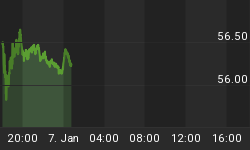Originally published November 15th, 2009.
The performance of silver this year relative to gold has been paradoxical - on the one hand it has outperformed gold, while on the other it has yet to make new highs. The explanation for this behaviour is of course the fact that silver got trashed last year during the general market meltdown, when it dropped in percentage terms much more than gold, and thus this year it has had much more ground to make up. This brings us immediately to the important issue of why silver has underperformed gold so markedly in recent weeks, and what this implies. As we will soon see the explanation is actually rather simple.
But first we will examine silver's recent performance on its year-to-date chart. On this chart we can see that while gold has been forging ahead in recent weeks, silver has bogged down at a level where there is obviously considerable resistance, and a bearish looking potential Head-and-Shoulders top has formed. For various reasons, however, silver is expected to abort this pattern and break out upside. A big reason is the strength in gold whose parabolic acceleration looks set to continue, and it is hardly likely that this will happen with silver dropping away. While there is some chance that silver might first drop back towards the neckline of its potential H&S pattern, in the event that gold reacts somewhat to ease its overbought condition, there is thought to be a fair chance that it will instead abort the pattern and break out upside almost immediately. All moving averages are in bullish alignment and with short-term oscillators such as the RSI and MACD indicators close to neutrality there is certainly plenty of upside potential.

The reason for silver struggling at the current level becomes obvious when we look at it 2-year chart, on which we can see that it is working off the resistance generated by those poor unfortunates who bought in the first half of 2008 before the cave in, and who are now trying to "get out even". Once this supply is absorbed, silver will be free to advance more swiftly.

If we now factor in the decline in the dollar by using the long-term chart for silver in Euros, we can see that the concentration of resistance around and just above the current level is considerably greater than one would otherwise suspect by just looking at the normal chart in dollars. From this it should be obvious that once silver clears this resistance it will be free to advance much more rapidly as the remaining resistance near the highs is comparatively trivial.
















